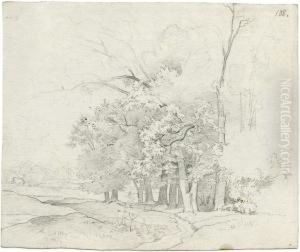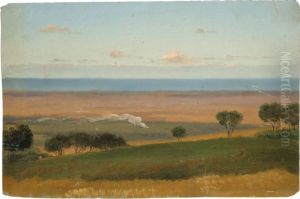Albert Franz Venus Paintings
Albert Franz Venus was a German painter, primarily known for his portrait and genre paintings. Born on July 20, 1843, in Dresden, Germany, he was the son of the engraver Carl Venus. Albert grew up in an environment steeped in artistic tradition, which inevitably influenced his career choice.
Venus studied at the Dresden Academy of Fine Arts, where he was taught by Julius Schnorr von Carolsfeld and Ludwig Richter, two prominent figures in the German art world of the 19th century. His training was traditional, focusing on the technical aspects of painting and drawing, which was the norm during that period.
After completing his studies, Venus embarked on a career as a professional artist. He garnered attention for his portraits, which were noted for their lifelike quality and psychological depth. His genre paintings, which depicted scenes from everyday life with a keen eye for detail and narrative, were also well received. Venus's works were exhibited in various art shows, including those at the Dresden Academy, and he gained a modest level of success and recognition during his lifetime.
Despite his talents, Venus never achieved the level of fame of some of his contemporaries, and his work was largely forgotten after his death. He died on October 5, 1886, in Dresden, at the relatively young age of 43. It was not until later years that art historians began to reassess his contributions to German art, recognizing the skill and subtlety of his paintings.
Today, Venus's works can be found in several art collections and museums, and he is regarded as a skilled practitioner of portraiture and genre painting during the 19th century in Germany. His legacy is that of a talented artist who captured the spirit of his time with elegance and acute observation.




